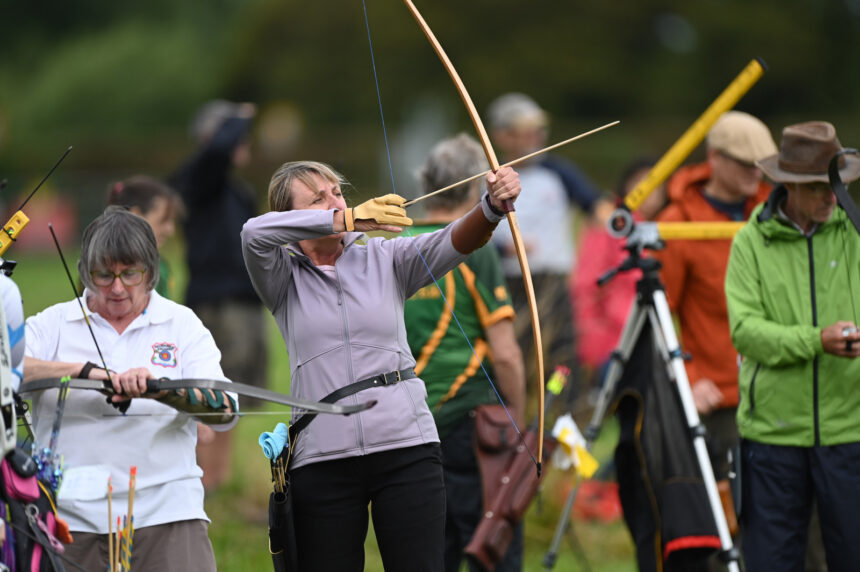Introduction to Directory Archery
Have you ever felt the thrill of hitting a bullseye? Or perhaps you’ve watched in awe as skilled archers gracefully release their arrows, sending them soaring toward distant targets. If so, directory archery might just be your next passion. This unique sport combines precision, focus, and a touch of adventure—all while connecting with nature.
Directory archery is not merely about shooting arrows; it’s about immersing yourself in an experience that sharpens both body and mind. Whether you’re looking to take up a new hobby or sharpen your skills for competition, this guide will walk you through everything you need to know to get started on your journey into the world of directory archery. Get ready to discover the intricacies of bows, arrows, techniques, safety tips, and more!
Understanding the Different Types of Bows
When diving into directory archery, understanding the types of bows is essential. Each bow type has unique characteristics that cater to different shooting styles and preferences.
The recurve bow stands out with its distinctive curves at both ends. This design stores more energy, allowing for powerful shots. It’s often favored in competitions due to its accuracy and versatility.
Compound bows utilize a system of pulleys and cams. This technology makes them easier to draw back while increasing power upon release. They are ideal for hunters seeking precision from a distance.
Longbows have a rich history dating back centuries. Known for their simplicity, they offer shooters a traditional experience but require skillful technique for effective use.
Crossbows operate differently by utilizing a horizontal limb assembly. These are great options for those who prefer aiming with minimal effort in drawing the string back manually. Each type provides distinct advantages based on your archery journey.
Choosing the Right Arrows for Your Bow
Choosing the right arrows for your bow is crucial for achieving accuracy and consistency in directory archery. First, consider the arrow’s spine, which indicates its stiffness. A correctly spined arrow will flex appropriately upon release, allowing for better flight.
Next, look at the material. Carbon arrows are lightweight and durable, while aluminum offers a bit more weight and precision. Each has its own advantages depending on your shooting style.
Additionally, pay attention to the arrow length. An improperly sized arrow can lead to poor performance or even injury. Measure from your nocking point to the back of your bowstring for an accurate fit.
Fletching also plays a significant role in stability during flight. Choose between vanes or feathers based on environmental conditions and personal preference.
Experimenting with different combinations will help you find what works best for you as you develop your skills in directory archery.
Essential Equipment and Gear for Directory Archery
To succeed in directory archery, having the right equipment is crucial. Start with a high-quality bow that suits your skill level and style. Whether you choose a recurve, compound, or traditional bow will influence your overall experience.
Next up are arrows. They must match your bow’s draw weight and length for optimal performance. Consider factors like material and fletching for better accuracy.
Don’t overlook protective gear. Arm guards prevent string slap on your arm, while finger tabs offer comfort when drawing the string back.
A sturdy quiver keeps arrows organized and within reach during practice sessions or competitions.
Invest in a reliable rangefinder to assist with distance measurements—crucial for hitting those targets consistently. Each piece of equipment plays its role in enhancing your skills and enjoyment of this engaging sport.
Proper Shooting Techniques
Proper shooting techniques are crucial for improving your accuracy in directory archery. Start by adopting a comfortable stance. Your feet should be shoulder-width apart, providing stability while you aim.
Next, focus on your grip. Hold the bow firmly but not too tightly to avoid torque during release. Relaxed fingers will help maintain a smooth shot.
Aiming is all about alignment. Keep your eye on the target and use sight pins if available. Breathe steadily; inhale deeply before drawing back and exhale slowly as you prepare to release.
When it’s time to shoot, draw the string back smoothly to anchor points like the corner of your mouth or chin. This consistency enhances precision with each arrow fired.
Follow through after releasing the arrow. Maintain your posture until you see where it lands—this helps reinforce good habits over time without unnecessary strain on your body.
Safety Tips for Directory Archery
Safety is paramount in directory archery. Before you even pick up a bow, familiarize yourself with the range rules. Each location may have specific guidelines to follow.
Always wear protective gear, including arm guards and finger tabs. These items not only enhance your comfort but also prevent injury during practice or competitions.
When preparing to shoot, ensure that the area behind your target is clear. No one wants an errant arrow causing harm unintentionally.
Keep your bow pointed downrange at all times when nocking an arrow. This simple habit helps maintain safety for everyone around you.
Never draw your bowstring without an arrow nocked unless practicing proper form or dry-firing under supervision. This can damage both the bow and lead to accidents.
If you’re new to archery, seek guidance from experienced shooters or instructors before heading out on your own.
Advanced Techniques and Tips
Advanced directory archery can elevate your skills significantly. Focus on refining your anchor point. This is where consistency begins, ensuring that each shot starts from the same place.
Practice visualization techniques before shooting. Picture the target in your mind and imagine the flight of the arrow hitting its mark. Mental preparation enhances focus and precision.
Experiment with different grips on the bow handle. A comfortable grip can drastically change how you perform under pressure.
Don’t shy away from varying distances during practice sessions. Shooting at diverse ranges helps adapt to real-world conditions you’ll encounter in competitions.
Consider recording yourself while shooting to analyze form and technique later. Self-assessment offers valuable insights for improvement that might not be obvious in real-time.
Engage with experienced archers for tips tailored to your strengths and weaknesses; their guidance can provide a fresh perspective on enhancing your game.
Finding a Directory Archery Club or Community
Finding a directory archery club or community can enhance your experience and skills. Start by searching online for local clubs that focus on directory archery. Websites like Archery Talk or even social media platforms often have groups dedicated to this sport.
Visiting local sporting goods stores can also provide leads. Staff members are typically in the know about nearby clubs or events. Don’t hesitate to ask them for recommendations.
Attending archery competitions is another excellent way to connect with fellow enthusiasts. You’ll meet people who share your passion, and they might invite you to join their practice sessions or club activities.
Explore community centers or parks; many offer classes where you can learn more about directory archery while meeting others interested in the same pursuit. Engaging with these communities not only improves your skills but also enriches your understanding of the sport through shared experiences.
Understanding Scoring and Competitions
Scoring in directory archery can vary based on the competition format. Most commonly, targets are divided into concentric circles with points awarded for accuracy. The closer your arrow lands to the center, the higher your score.
Competitions often have different categories such as indoor or outdoor events. Each type may use unique scoring systems tailored to distance and target size. Understanding these nuances is crucial for preparation.
Archers compete individually or in teams, adding an exciting dynamic to tournaments. Team scores are usually calculated by combining individual performances, fostering camaraderie among participants.
Many competitions also include various age groups and skill levels. This inclusivity encourages more people to participate, regardless of experience.
Keeping track of scores electronically has become popular in recent years. Digital scoreboards make it easy for spectators and competitors alike to follow along as results unfold during events.
Conclusion: The Benefits of Directory Archery and How to Get Started
Directory archery offers a unique blend of skill, focus, and camaraderie. By engaging in this sport, you not only develop physical strength but also enhance your mental discipline. The thrill of hitting the target is unmatched and brings about a sense of achievement.
Getting started is easier than you might think. Research local directory archery clubs or communities to find like-minded enthusiasts who can offer guidance and support. Many clubs provide rental equipment for beginners, allowing you to test different bows before making an investment.
As you dive deeper into directory archery, you’ll discover the joy of competing against others while enjoying nature’s beauty. No matter your age or skill level, there’s always room for improvement and growth within this captivating sport.
So grab your bow and arrows, immerse yourself in the world of directory archery, and experience all it has to offer!











